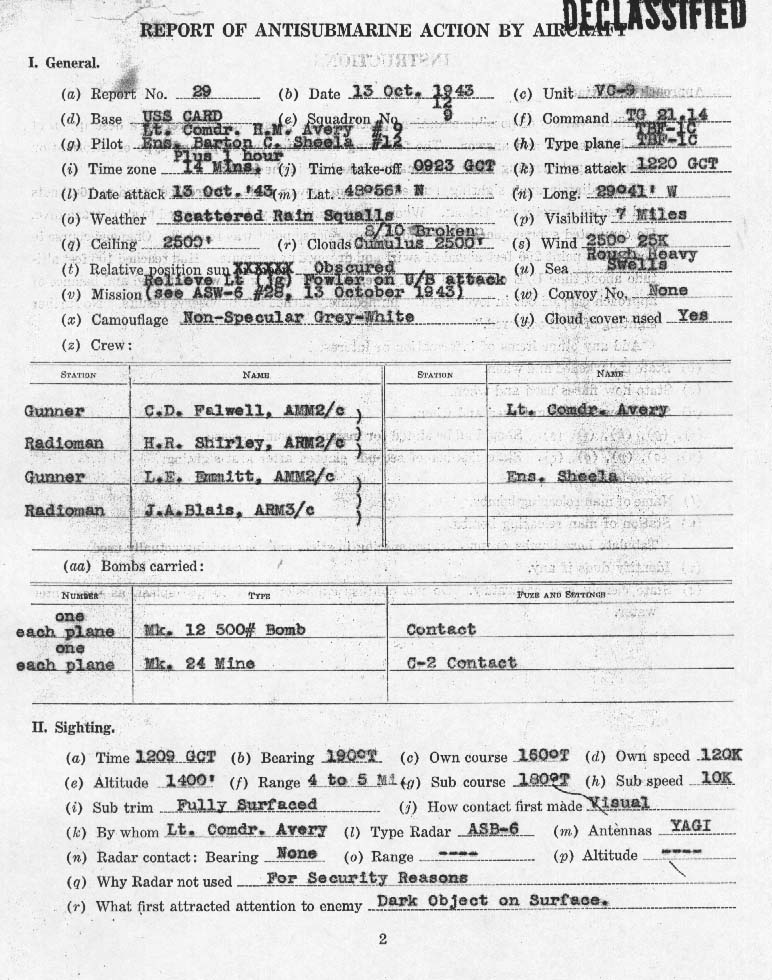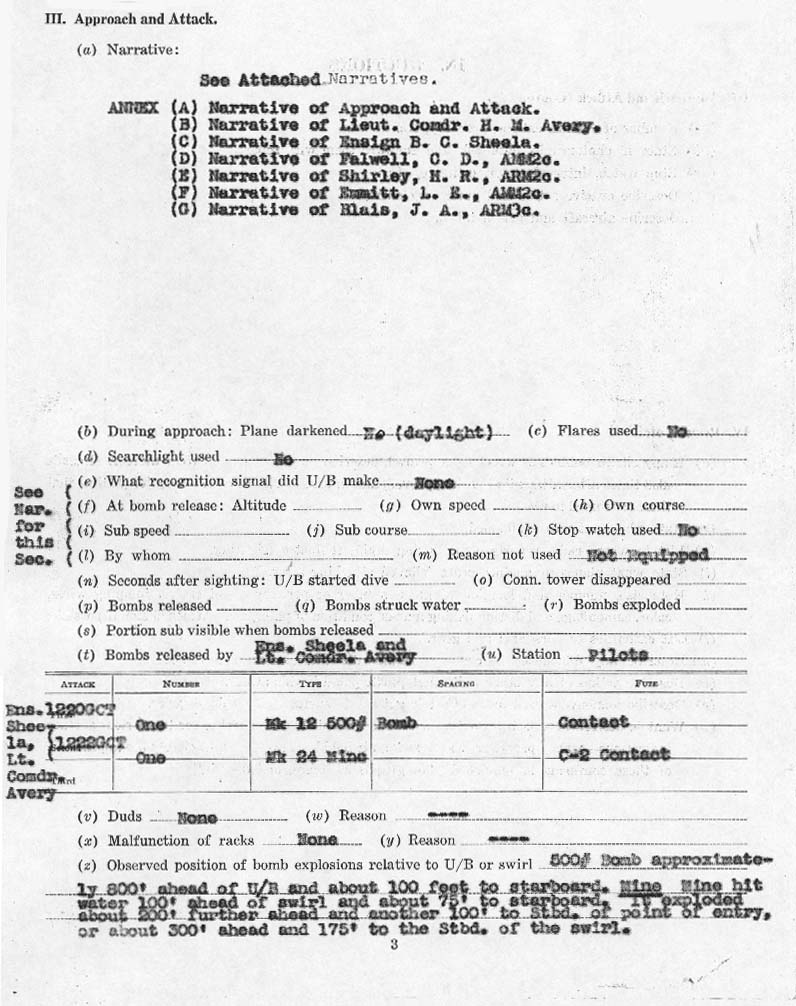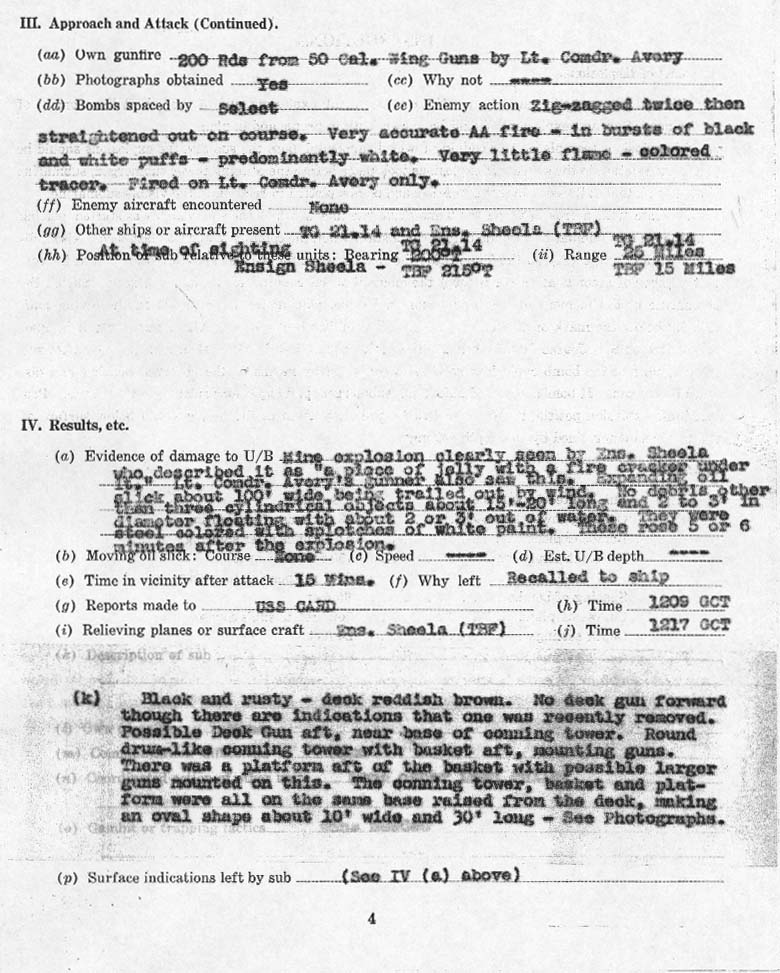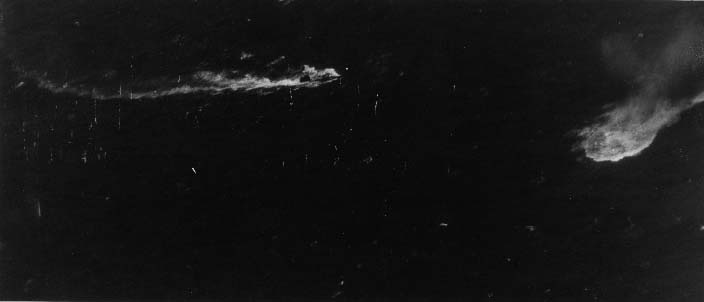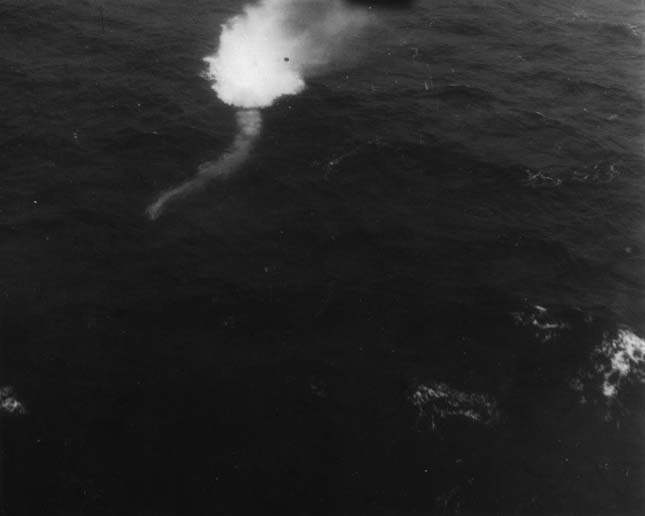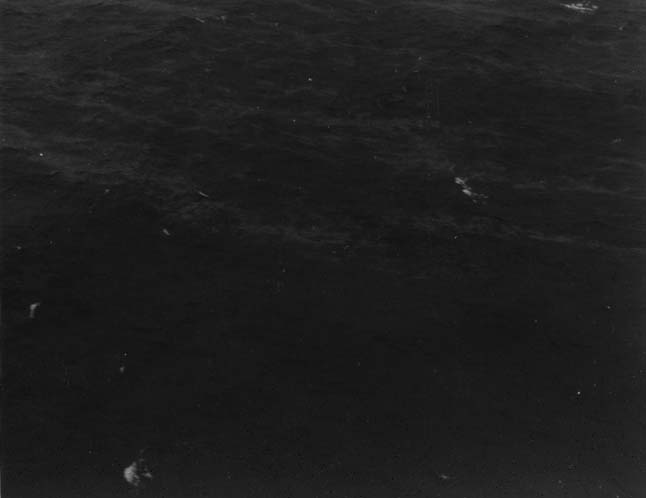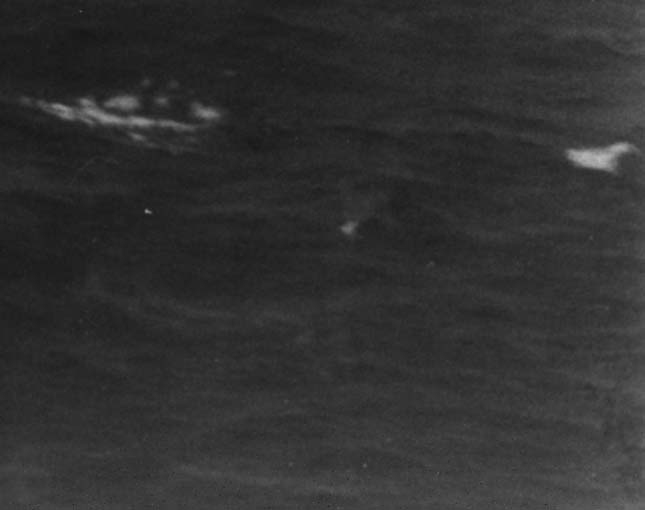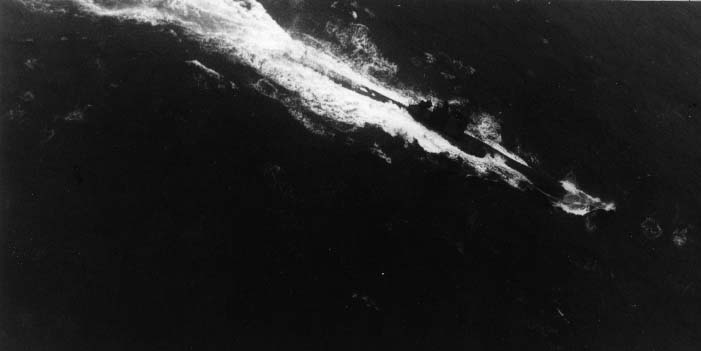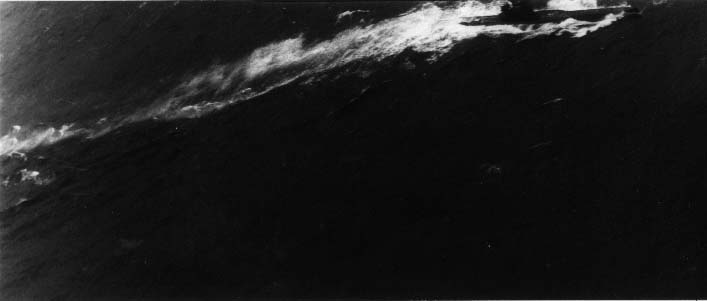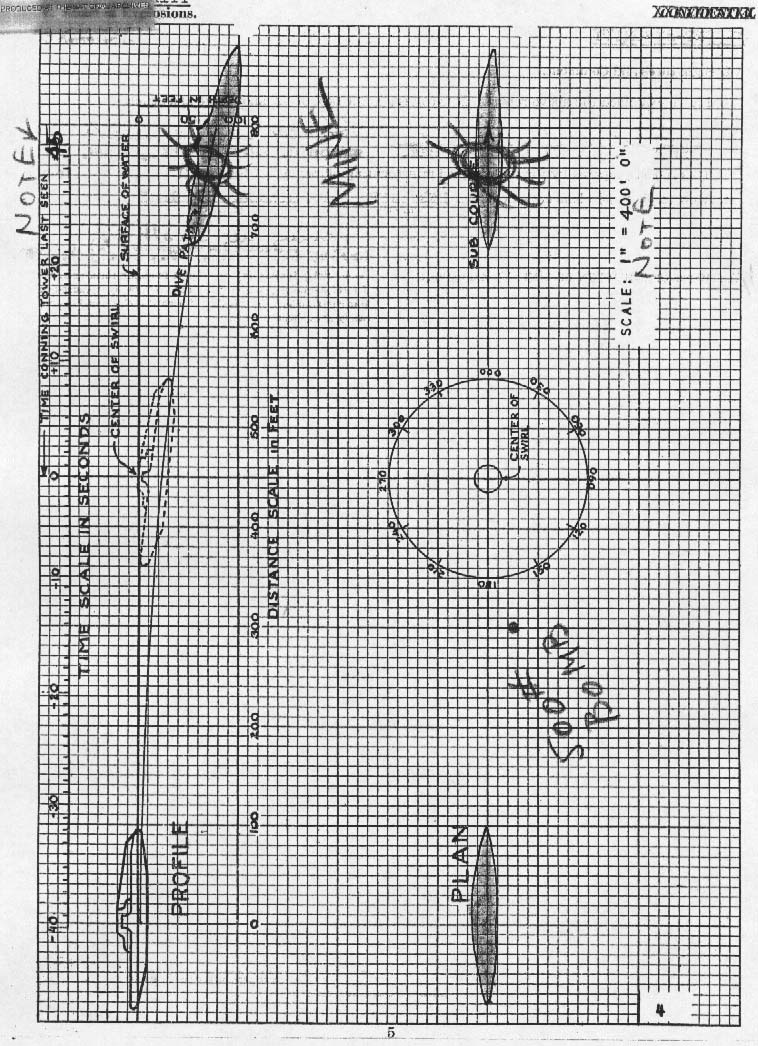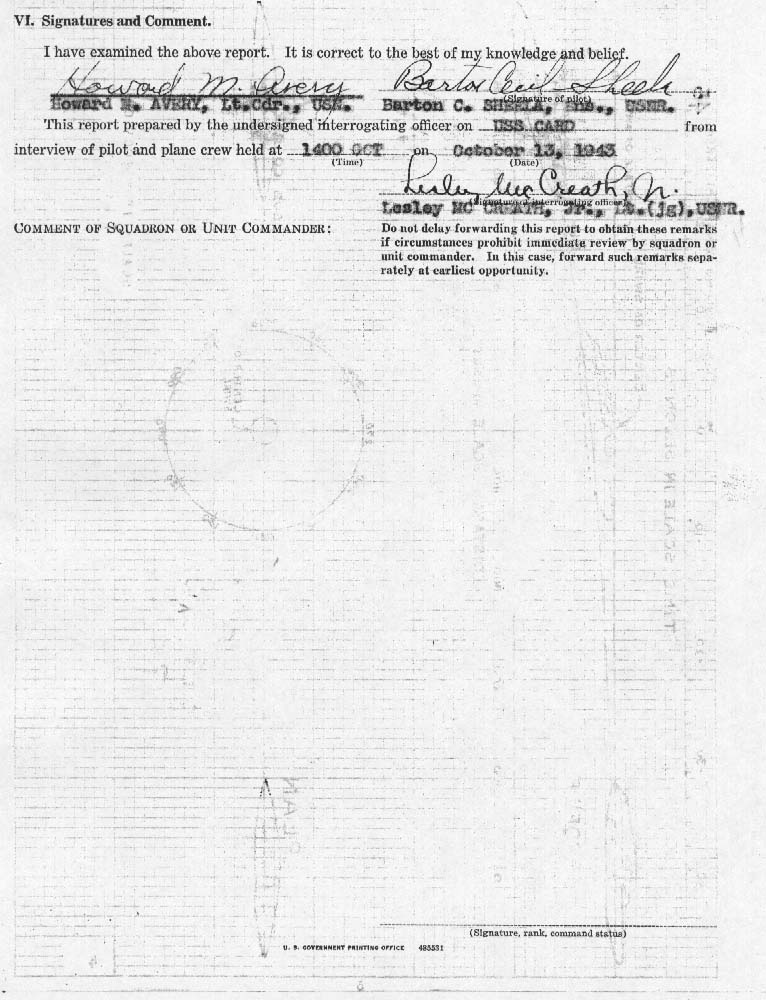| FVC9/A16 | ||||||||||||||||||||||||||||||||||||||||||||
COMPOSITE SQUADRON NINE |
||||||||||||||||||||||||||||||||||||||||||||
c/c Fleet Post Office, |
||||||||||||||||||||||||||||||||||||||||||||
| New York, New York. | ||||||||||||||||||||||||||||||||||||||||||||
| 18 October 1943. | ||||||||||||||||||||||||||||||||||||||||||||
|
||||||||||||||||||||||||||||||||||||||||||||
| - - - - - - - - - - - - - - - - - - - - - - - - - - - - - - - - - - - - - - - - - - - - - - - - - - - - - - - - - - - | ||||||||||||||||||||||||||||||||||||||||||||
|
||||||||||||||||||||||||||||||||||||||||||||
|
||||||||||||||||||||||||||||||||||||||||||||
27 October 1943. |
||
| CVE-11/A16-3 | ||
| Subject: ASW-6 Report No. 29 - Forwarding of. | ||
| - - - - - - - - - - - - - - - - - - - - - - - - - - - - - - - - - - - - - - - - - - - - - - - - - - - - - - - - - - - | ||
| 4. The tactical objectives are first, to insure that at least one plane, and possibly two, will always be in position to make an optimum attack with the mine; second, to force the U-boat to dive without unduly risking our planes; and third, to provide a second plane for observation of the mine's functioning, which is virtually a necessity in rough seas. | ||
| 5. The attack of Ensign Sheela fully accomplished its purpose in forcing the U-boat to dive, but it appears that he was entirely too hurried in both his approach and ultimate drop for accurate bombing. As a matter of record, very few of the pilots of VC-9 ever practiced glide bombing before this cruise, although an effort was made to accomplish this training prior to embarkation. Present procedure requires that each pilot check his range errors on each flight by making both a glide bombing and mine attack on the wake of the carrier, using miniature bombs. Results are most gratifying, and consistently improving. | ||
| 6. In view of the mine's explosion observed by the turret gunner of the attacking plane and by the pilot of the second plane on the scene, together with the oil slick and three cylindrical objects which surfaced in the residue about 5 to 6 minutes after the explosion, it is considered that this attack resulted in a definite kill. | ||
| A. J. ISBELL. | ||
| Advance Copy to: | ||
| COMINCH | ||
| COMAIRLANT | ||
| COMASDEVLANT | ||
- 2 - |
||
